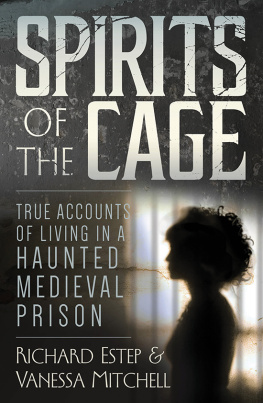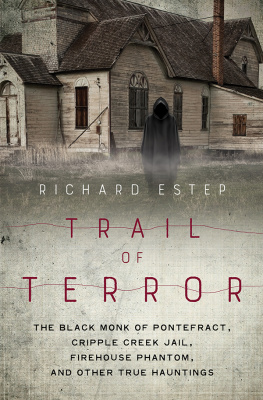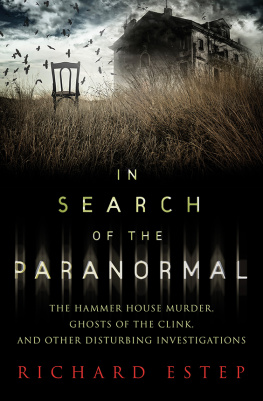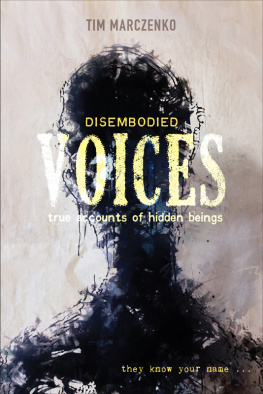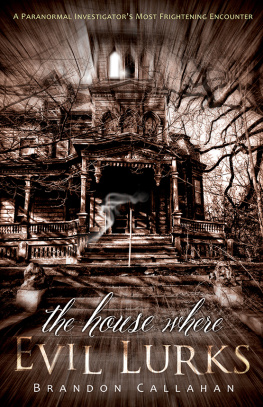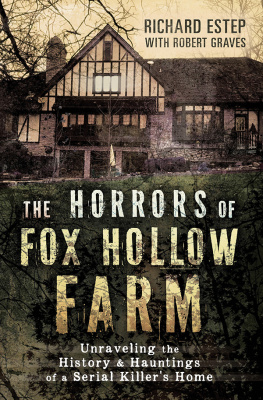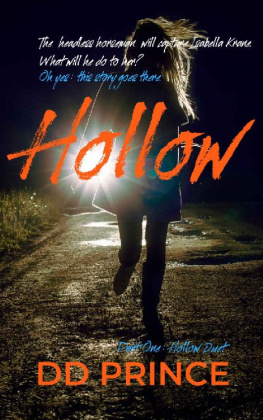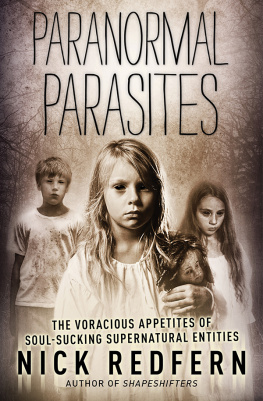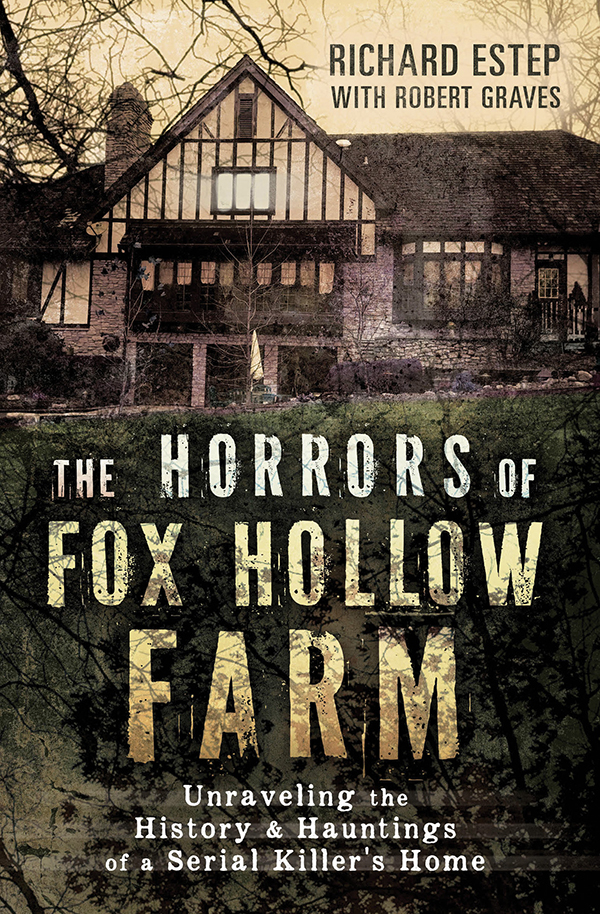Richard Estep ( Boulder, CO) first got involved with paranormal research in 1995 and has investigated haunted locations on both sides of the Atlantic. He is the author of numerous nonfiction books on the subject of paranormal research, and his work features on the TV shows Haunted Case Files, Haunted Hospitals, and Paranormal 911. Visit him online at www.richardestep.net.
Robert Graves (Carmel, IN ) is the owner of Fox Hollow Farm. He has become something of a student of Herb Baumeisters life as both the man and the murderer.

Llewellyn Publications
Woodbury, Minnesota
Copyright Information
The Horrors of Fox Hollow Farm: Unraveling the History & Hauntings of a Serial Killers Home 2019 by Richard Estep and Robert Graves.
All rights reserved. No part of this book may be used or reproduced in any matter whatsoever, including Internet usage, without written permission from Llewellyn Publications, except in the form of brief quotations embodied in critical articles and reviews.
As the purchaser of this e-book, you are granted the non-exclusive, non-transferable right to access and read the text of this e-book on screen. The text may not be otherwise reproduced, transmitted, downloaded, or recorded on any other storage device in any form or by any means.
Any unauthorized usage of the text without express written permission of the publisher is a violation of the authors copyright and is illegal and punishable by law.
First e-book edition 2019
E-book ISBN: 9780738760797
Cover photo by Richard Estep
Cover design by Shira Atakpu
Interior photographs by Richard Estep
Llewellyn Publications is an imprint of Llewellyn Worldwide Ltd.
Library of Congress Cataloging-in-Publication Data (Pending)
ISBN: 978-0-7387-5855-8
Llewellyn Publications does not participate in, endorse, or have any authority or responsibility concerning private business arrangements between our authors and the public.
Any Internet references contained in this work are current at publication time, but the publisher cannot guarantee that a specific reference will continue or be maintained. Please refer to the publishers website for links to current author websites.
Llewellyn Publications
Llewellyn Worldwide Ltd.
2143 Wooddale Drive
Woodbury, MN 55125
www.llewellyn.com
Manufactured in the United States of America
Contents
by Cami Andersen
Chapter 1:
Chapter 2:
Chapter 3:
Chapter 4:
Chapter 5:
Chapter 6:
Chapter 7:
Chapter 8:
Chapter 9:
Chapter 10:
Chapter 11:
Chapter 12:
Chapter 13:
Chapter 14:
Chapter 15:
Chapter 16:
Chapter 17:
For my great-nephew Harry James Estep, who entered this world at 6:31 p.m. on the evening of June 15, 2018.
Richard Estep
In memory of the victims. May they rest in peace.
Robert Graves
Foreword
I n 2018, my longtime friend awaited the arrival of his parents, who were traveling to pay him a visit. As the hour of their arrival came and went, he began to wonder where they were. He called their cell phones but got no answer. The night went by with no contact from them. With concern and fear heavy upon him, he decided to get in his vehicle and drive the six-hour journey to look for them. Perhaps their car had broken down in a remote area on the side of the road and they had no way to contact him. Maybe they were involved in a motor vehicle accident.
There was no sign of them or their vehicle during the several-hour drive. Finally, he made his way down the long, secluded dirt driveway to their home. As he drew near their house, he saw their vehicle with packed bags on the ground ready to be placed inside. The dogs were out running in the yard of their several-acre desert property. The door to their house was left ajar and all personal items and medications were left untouched, as if they had stepped outside and lingered in the yard. Yet there was no sign of his parents. They seemed to have disappeared into thin air.
Authorities were contacted, and it was soon apparent to them that they would find no evidence of a struggle or foul play. But people do not just disappear without an explanation or a trace do they?
With no clues to his parents whereabouts, they began organizing search parties to comb the vast and unforgiving deserts, caves, and mine shafts surrounding the property. Months of searching yielded no answers. The family frequently fell into despair, but they still held on to the hope that the couple would be found one day and theyd receive answers to the questions that plague them every moment.
During this time, I was attending university, studying criminal justice with a focus on forensics and crime scene investigation. Some case studies were hauntingly similar to that of my friends in many ways, but they were stories of people I did not know that focused primarily on the facts and the evidence obtained by law enforcement. However, not knowing them does not make the cases any less tragic. Through my friend, I was getting a professionally unique and valuable, albeit unwanted, glimpse into the personal lives of the friends and family members affected by a potential crime, as well as the challenges, heartache, and desperation that come with not knowing what has happened to a loved one.
No one expects something like that to happen to themselves or to their friends or loved ones. It hit far too close to home for my liking. People believe it only happens in the movies or to other people, as seen on true crime television series and documentaries. If youre lucky, that holds true for you. It is a surreal experience and often feels like it isnt real. Statements of disbelief are common. I have uttered the phrase, I cant believe this is happening to them! many times in conversation. We dont know what has happened to them or who may have been involved. It could just be an isolated incidentmaybe an accident occurredbut thats not true in all cases. Sometimes an evil, dangerous person walks into their lives for no rhyme or reason and does unspeakable thingsand goes on to repeat them over and over again.
The number of serial killers jumped in the 1960s, 70s, and 80s, and interest in them and why they do the things that they do has grown in the last few decades. Herbert Baumeister has drawn the curiosity of many serial killer enthusiasts, and scientists have gone to great lengths to research and interview serial killers such as Ted Bundy, Edmund Kemper, and John Wayne Gacy. They often have to listen to the horrid details and accounts of the acts from the killers own perspective, with the goal of better understanding how to identify future killers and prevent homicides.
While many serial killers have similar upbringings and characteristics, there are no concrete commonalities that would shed light onto which life event or events made them who they are or how they are able to do the things they do or whether they are simply born evil.
In the US, one in three homicides goes unsolved and ends up as a cold case. The national annual clearance rate for homicide is in the low- to mid-sixtieth percentile range, which still leaves 35 to 40 percent of all homicides unsolved. Even when they are solved, obtaining a conviction for such crimes can be extremely difficult for prosecutors. In order to convict a perpetrator successfully, there must be no stone left unturned and no room left for reasonable doubt. By the time a case makes it into the courts, unless there is sufficiently solid evidence to get a conviction, most district attorneys wont even try a case if they see any reason to suspect that they wont win.


